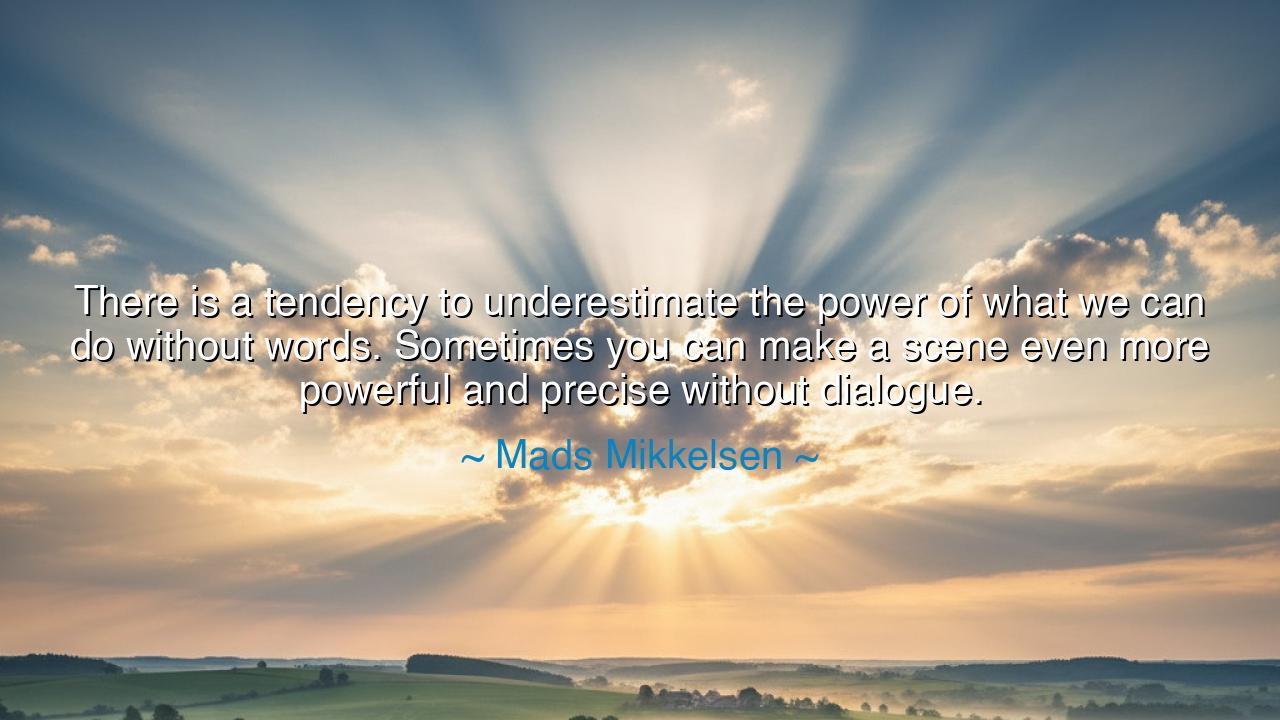
There is a tendency to underestimate the power of what we can do
There is a tendency to underestimate the power of what we can do without words. Sometimes you can make a scene even more powerful and precise without dialogue.






The words of Mads Mikkelsen carry the resonance of ancient wisdom: “There is a tendency to underestimate the power of what we can do without words. Sometimes you can make a scene even more powerful and precise without dialogue.” In this he speaks to the silence that transcends speech, the realm where gesture, gaze, and presence communicate more deeply than any language. For though words are mighty, they are not always needed; the human soul has ways of speaking that rise above the tongue.
The ancients knew this truth well. In Homer’s Iliad, when Priam clasps the hands of Achilles, begging for the body of Hector, it is not the speeches that move us most, but the image of two enemies weeping together in silence. Their grief communicates a universal truth no rhetoric could equal. Thus, Mikkelsen reminds us that dialogue is not the only vessel of meaning—often it is the absence of words that allows truth to shine more brilliantly.
Consider the history of cinema itself. In the era of silent films, actors such as Charlie Chaplin conveyed entire worlds of laughter, sorrow, and hope without a single spoken line. Through movement, expression, and timing, they stirred audiences across languages and cultures. Here lies proof of Mikkelsen’s insight: that a scene can pierce the heart most directly when freed from the limits of words, relying instead on the raw force of image and presence.
Even beyond art, this wisdom holds sway. A soldier’s salute, a lover’s embrace, a mother’s touch—these speak with a clarity beyond language. In moments of greatest joy or deepest grief, words often fail us, and silence becomes the truest form of communication. The power of this silence lies in its universality: it needs no translation, for it flows from heart to heart without barrier.
Therefore, let this truth endure: do not trust only in the tongue, but in the whole being. A look, a gesture, a moment of stillness may carry more power than the longest speech. As Mikkelsen teaches, the artist, the lover, the leader must learn to wield silence as skillfully as sound. For when words fall away, what remains is essence—and essence speaks with a voice more eternal than language.






MDMy Duyen
It’s interesting how this observation goes against the norm of modern cinema, where scripts are often dialogue-heavy. Mikkelsen’s idea reminds us that human connection doesn’t always need language. A silent stare can carry more tension than a five-minute argument. It makes me wonder — are filmmakers today afraid of silence, or have we as viewers forgotten how to listen to it?
TTTuan Thanh
This makes me think about how hard it actually is to perform or convey something powerful without dialogue. It requires incredible control — every movement, every glance must carry weight. Maybe that’s why great silent performances are so memorable. They engage the viewer’s imagination, forcing us to fill in emotional gaps ourselves. Isn’t that the essence of great storytelling — participation, not explanation?
KNTuan Khanh Nguyen
What Mikkelsen says feels deeply true, especially considering his acting style. There’s an elegance in the idea that silence can hold more meaning than words. It’s not just about film — it applies to life, too. Sometimes comfort, grief, or love are expressed best through presence, not speech. It makes me question whether our modern obsession with constant communication has dulled our sensitivity to the unspoken.
Nnguyentam
I love this perspective. It highlights something that’s often overlooked in storytelling — the art of restraint. So many directors rely heavily on dialogue, but true emotion can be communicated through expressions, movement, and atmosphere. It makes me think about how much is lost when we over-explain everything. Do we, as audiences, still have the patience to feel a story rather than be told it?
QHQuan Hieu
This quote really resonates with me because it reminds me how powerful silence can be — both in film and in real life. Sometimes a look, a gesture, or even the absence of reaction speaks louder than any line of dialogue. I wonder if that’s why some of the most emotional movie scenes stay in our minds — not because of what was said, but because of what was felt.